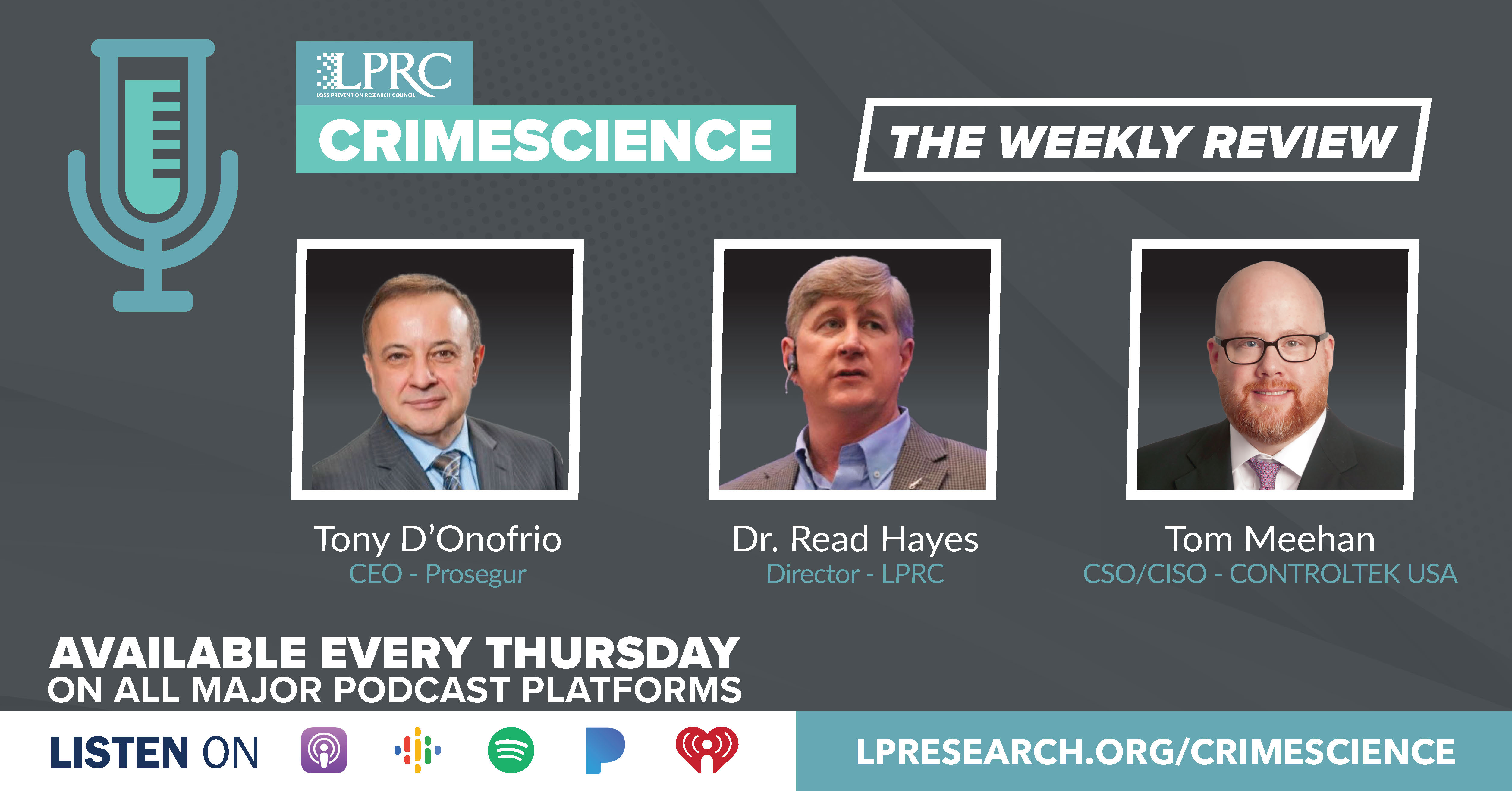Loss Prevention Research Council Weekly Series - Episode 114 - Consumer Perspectives on the Metaverse and Inflation
With Dr. Read Hayes, Tony D'Onofrio, and Tom Meehan

Survey: Consumers Have Metaverse Expectations
https://chainstoreage.com/survey-consumers-have-metaverse-expectations
Let’s start this week with an update from Chain Store Age on what consumers are expecting from the metaverse.
According to “Connecting in the Metaverse,” a new survey of 1,500 U.S. consumers, 69% of respondents are looking for a quick getaway by exploring metaverse-like environments to engage with friends, family, and colleagues, and enjoy more leisurely activities. Nearly half (49%) of respondents view a fully-built, unified metaverse as a fertile landscape for growing relationships and deepening connections.
While the majority of respondents have visited a metaverse-like platform recently, men (73%) are more likely than women (62%) to visit these destinations. Not surprisingly, millennials (75%) and Gen Zers (64%) are heading to the metaverse more often than baby boomers (45%).
Once they arrive in the metaverse, surveyed women are more likely to use these platforms as a virtual showroom, browsing products digitally before returning to the physical world to make purchases (25% women vs. 18% for men).
Nearly half of respondents (47%) who utilize the metaverse are buying virtual items or finding inspiration for purchasing a physical product. However, slightly more than half (51%) of respondents expect customer service to be better in the metaverse. Nearly one in three respondents (32%) believe these immersive environments will provide less frustration and anxiety than calling and talking to a contact center agent.
In addition, 27% of respondents both envision the metaverse as making it easier to access product or brand information and say that it will be more effective and interactive to seek assistance from an omnichannel agent’s metaverse avatar than to engage with a chatbot online (27%).
- For surveyed baby boomers, virtual travel plans to the metaverse environment center primarily around socializing with friends (39%).
- Close to one-third of respondents (32%) are drawn by the possibility of finding new and more thrilling experiences.
- More than one-third of respondents (34%) predict the metaverse will be mainstream within the next five years.
Why Retailers Should Worry About Inflation, but Dread Wealth Effect
https://www.pymnts.com/news/retail/2022/why-retailers-should-worry-about-inflation-but-dread-the-wealth-effect/
Let’s switch now to new data published in Payments.com on how consumers are reacting to inflationary pressures.
More than half (53%) of consumers say their financial condition is worse in 2022 than it was in 2021. Nearly a third believe it will deteriorate over the next 12 months.
Nearly 8 in 10 of those living paycheck to paycheck with issues paying their bills say they’ve seen their financial situation worsen over the last year, and half expect it to erode further.
Forty-four (44%) percent of those earning more than $100k report they are worse off today than a year ago. A third of those high earners believe their financial situation will deteriorate in the year to come.
Nearly two thirds (62%) of Americans report maxing out their household budgets, including a fifth of high earners. Millennials are most negatively impacted. Nearly everyone — 80% to 90% of all consumers — reports taking at least one step to adjust their spending levels.
Seventy percent (70%) of retail shoppers say they’re cutting back on purchases they don’t consider essential, including 87% of consumers earning over $100,000. Few consumers say they’ll compromise quality to save money — instead, they will reconsider whether a purchase is necessary at that time.
Seventy-one percent (71%) of consumers say they’re eating at home more often. That includes two thirds of consumers earning over $100,000 and those not living paycheck to paycheck. These are two groups who presumably have discretionary money to spend, but they aren’t spending it at restaurants right now the way they once did.
More than half of retail shoppers (52.6%) look at competitors to their favorite merchants to find cheaper prices on the items they want to buy, including one in five high earners. Forty-five percent (45%) of consumers say they’ll shop other grocery stores for better prices on the things they want to buy, too, including nearly 20 percent of those with incomes over $100,000 per year.
Consumers also think they’ll be living with higher prices for a while. Specifically, they estimated 653 days longer from the day they responded to the survey.
America’s Biggest Inflation Concerns
https://www.statista.com/chart/27845/concerns-about-rising-consumer-prices/
Finally, from Statista, more information on USA concerns with Inflation. Here are the top five categories that consumers are concerned they will not be able to afford in the face of rising prices.
- Gas / Fuel with 63% very concerned to somewhat concerned
- Groceries at 59%
- School Supplies at 50%
- Clothing at 49%
- Restaurants Visits and takeout at 46%
Soon I will publish my second part on retail crime trends that also includes inflation’s impact on retail theft. Look for it in the next couple weeks.
















